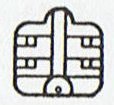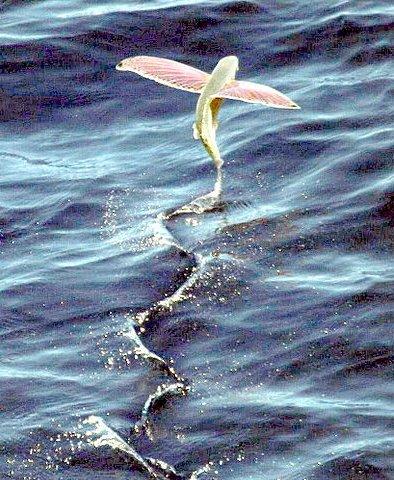4. The 14th son of Tu seems to be connected with a return 'down into the season of water':
Considering the Kankin glyph and rakau in Eb7-9 together we can imagine an arrangement with the 'cosmic tree' in the central position. In Kankin Sun apparently is at its 'root', he has descended into the Underworld. Down there water should accumulate. And earlier when I considered the meaning of Maroro I did not pay attention to the simplest explanation, which is 'the flying fish':
A flying fish is capable of both travelling under and above the surface of the water, and anciently such were believed to sleep on the beaches:
"The origin of the term Exocoetidae is as follows. The suffix -idae, common for indicating a family, has been placed after the root of the word exocoetus, not only the present scientific name for a genus of flying fish in this family, but also the general name in Latin for a flying fish. The Latin name is a transliteration of the Ancient Greek name εξώκοιτος for the flying fish, literally 'sleeping outside', from εξω 'outside' and κοιτος 'bed', 'resting place', so named since flying fishes were believed to leave the water to sleep on the shore." (Wikipedia) He Maro is June, the month of winter solstice. Tahitian marara (flying fish) is possibly to be read as ma-raaraa (with double raa probably meaning no raa at all):
Maybe the flying fish refers to Moon. And maybe the raaraa glyph type indicates a time period, perhaps the 4th quarter of the year, ruled by her instead of by Sun. |
||||||||||||

